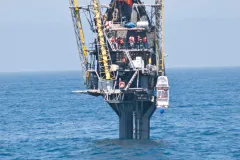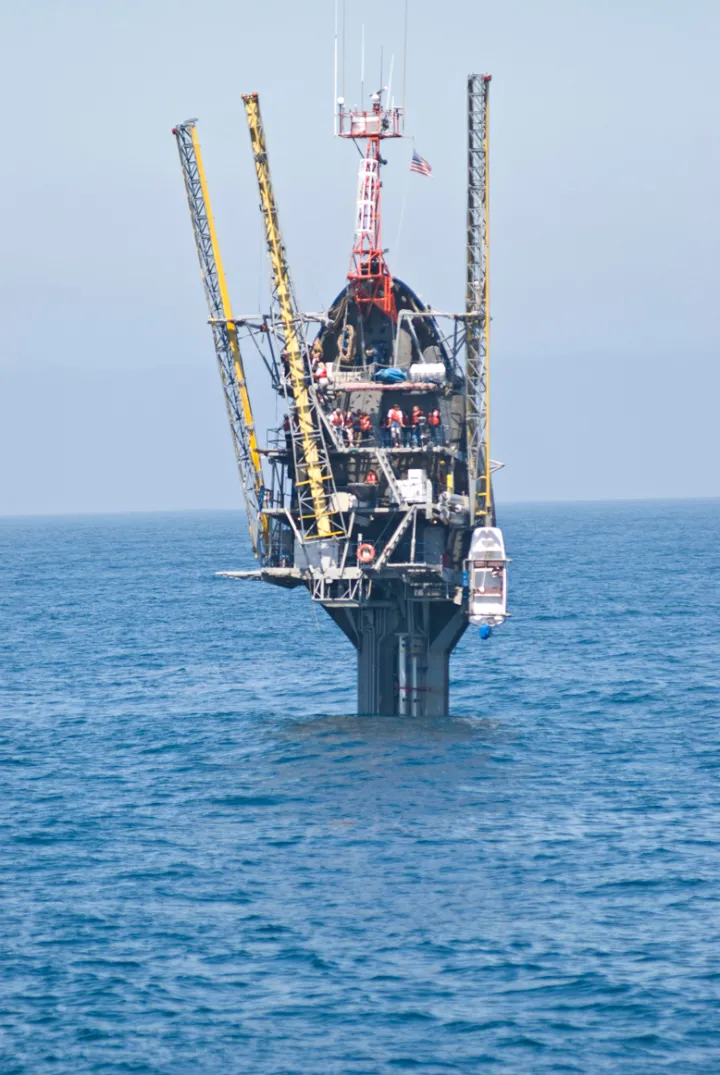Happy 50th Birthday, FLIP – a Mobile Research Island

Ships are well-known for their tiny rooms and tight quarters. But have you heard of a sea vessel that has toilets and sinks sticking out of the walls, and staircases and doors on the ceiling? This unique research vessel is real -- and, in June 2012, the Office of Naval Research and Scripps Institution of Oceanography celebrated its 50th birthday.
The reason FLIP -- or the FLoating Instrument Platform -- has such bizarre interior design is because all the rooms have to be livable when the vessel is in either of two configurations. In the first configuration, the 355-foot long research platform lies horizontally on top of the ocean's surface. But, when researchers want to anchor down to a certain spot, the entire craft flips from the horizontal to the vertical -- hence FLIP's name -- so that the human-occupied section bobs above the water while the rest of of the craft hangs below. (You should probably watch this video of FLIP flipping.)
Why doesn’t Hildebrand just hang his rope of microphones from a ship out at sea? The trick is just how stable FLIP is, despite the rocking of ocean waves. “It’s mostly like being on land,” he told me. “It will rock back and forth maybe a degree or so, but it’s pretty stable.”
FLIP truly is a unique way to conduct research – and its one of the few of its kind that remains. Over the past 50 years, FLIP’s owners, the Office of Naval Research, and operators, Scripps Institution of Oceanography, have worked hard to maintain it. And Hildebrand is certainly thankful. “If you want a stable presence out on the ocean for an extended time, FLIP is really the best way to go.”
Explore more about FLIP! The video embedded above is a mini-feature with Hildebrand made for the Sant Ocean Hall a few years ago, which includes a tour of FLIP and its wacky interior design. Learn more about John Hildebrand’s research into marine mammal acoustics and listen to whale sounds he's recorded around the world. And read more about FLIP -- how it flips and how researchers survive the tumble.


